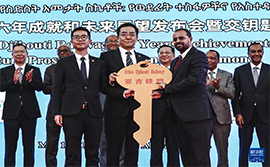

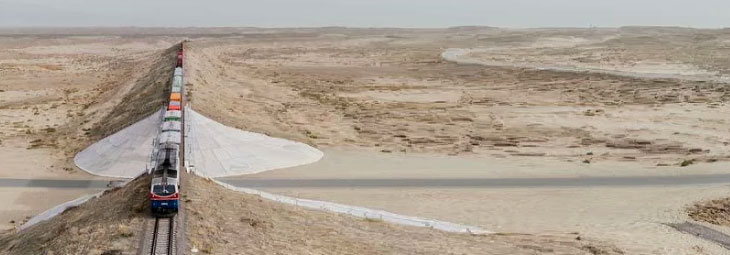
Since its inception, the Addis Ababa-Djibouti Railway has transported 680,000 passengers and 9.5 million tons of cargo, with an average annual increase in transport revenue of 39%. The achievements of the Addis Ababa-Djibouti Railway over the past six years and its future prospects were announced at a press conference and turnkey ceremony held on the 10th at Lebu Station in the outskirts of Addis Ababa, the capital of Ethiopia. This event marked the official commencement of operations of the railway by the Ethiopia-Djibouti Standard Gauge Railway Company.
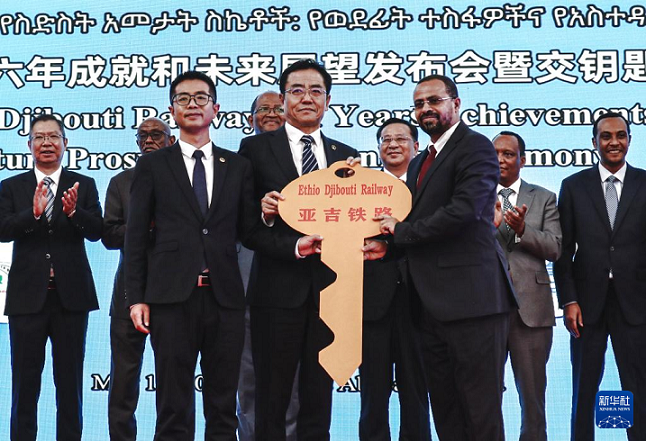
On May 10, 2024, at the Lebu Railway Station in the Ethiopian capital, Addis Ababa, the leaders of the Addis Ababa-Djibouti Railway Joint Venture Company from China and the local owners held a "turnkey" ceremony. [Photo/Xinhua]
The Addis Ababa-Djibouti Railway is Africa's first transnational electrified railway, stretching 752 kilometers from Addis Ababa in the west to the port in Djibouti, the capital of neighboring Djibouti. It was jointly constructed by China Civil Engineering Construction Corporation (CCECC) under China Railway Construction Corporation (CRCC) and the Second Bureau of China Railway (CRSBG) under China Railway Group Limited (CREC).
According to statistics from China Civil Engineering Construction Corporation (CCECC) Ethiopia, since the commencement of commercial operations on January 1, 2018, the Addis Ababa-Djibouti Railway has operated over 2,500 passenger trains and more than 7,700 freight trains, achieving a total commercial transport revenue of 11.3 billion Ethiopian Birr (approximately 197 million USD).
The Addis Ababa-Djibouti Railway began commercial operations in 2018. According to the contract, Chinese enterprises provided six years of railway operation and maintenance services to the owners. Through systematic training and mentorship from the Chinese side, local owners gradually took over railway operations. Dai Hegen, Chairman of China Railway Construction Corporation (CRCC), explained that the Chinese team, based on local conditions, helped establish six theoretical training centers and four centralized practical training centers along the railway. Additionally, the team collaborated with institutions such as Southwest Jiaotong University and Beijing Jiaotong University to provide on-site training for more than 320 technical professionals. They also sent 62 electric locomotive drivers, 77 mid-level managers, and 35 senior managers to China for training.
Giving a man a fish feeds him for a day; teaching a man to fish feeds him for a lifetime. Over the past six years, the Chinese side has trained and certified a total of 2,840 local employees, fully developing local capabilities in operations, maintenance, safety, and other areas, thereby laying a solid foundation for the timely and smooth handover. Robust capacity building has created a strong localized team. On January 1, 2024, the Ethiopia-Djibouti Standard Gauge Railway Company will fully take over the operation of the Addis Ababa-Djibouti Railway. This flourishing railway, nurtured by the youth and efforts of employees from China, Ethiopia, and Djibouti, will continue to bloom.
For Wang Tiantao, a Chinese technician at the Addis Ababa Railway Section, these six years have been over 2,000 days and nights of working side by side with local colleagues. He is responsible for managing and coordinating passenger and freight transportation across 10 stations, including Labu Station. During this time, he has witnessed the growth of his Ethiopian colleagues from knowing nothing about railways to fully taking over train operations.
"At the beginning of operations, there were 40 Chinese staff members in the railway section I was responsible for, but now it has been reduced to 5, while the number of local employees has increased from zero to 450," said Wang Tiantao. He added that after the turnkey ceremony, the Chinese team will mainly conduct key inspections and provide guidance and supervision, and will completely withdraw within two years.
This railway has not only provided employment opportunities for many local people but also strengthened economic exchanges and personnel exchanges between Ethiopia and Djibouti, becoming an "accelerator" for economic growth along the route. " The Addis Ababa-Djibouti Railway has significantly boosted trade and bilateral relations between Ethiopia and Djibouti. This railway connects Ethiopia with the rest of the world and holds significant importance in promoting Ethiopia's economic development," stated Alemu Sime, Minister of Transport and Logistics of Ethiopia, at the ceremony.
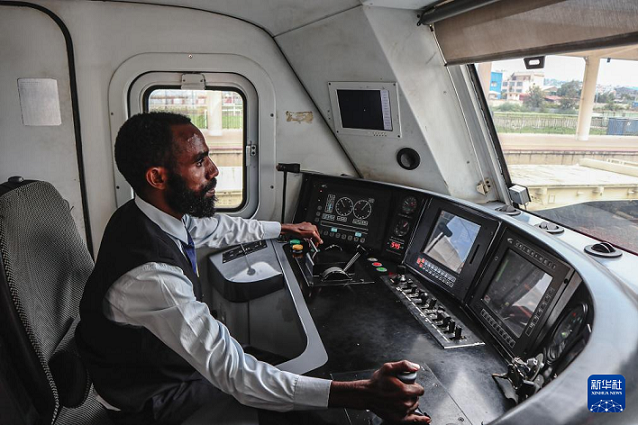
On May 10, 2024, Ethiopian train drivers worked in the driver's cabin of the Addis Ababa-Djibouti Railway trains [Photo/Xinhua]
The Addis Ababa-Djibouti Railway is an early achievement in implementing the Belt and Road Initiative and the ten cooperation plans of the Johannesburg Summit of the Forum on China-Africa Cooperation. It is also known as the "transport lifeline" of Ethiopia, playing a crucial role in safeguarding people's livelihoods. A large quantity of fertilizer, wheat, and steel enters Ethiopia through this railway, while Ethiopian products such as coffee, sesame, and clothing are exported via this route to reach international markets.
It is understood that with a transportation distance of 752 kilometers, road transport typically takes 3 to 7 days. However, after the Addis Ababa-Djibouti Railway opened, freight transportation only requires 20 hours, and the transportation cost is only two-thirds of that of road transport. Moving forward, the Chinese team will fully leverage its technical advantages to continue summarizing and refining the current standards and norms of the Addis Ababa-Djibouti Railway, gradually assisting both countries in establishing sound railway industry standards.
"After spending a whole decade in Ethiopia, I have become accustomed to life here. Although I feel a bit sentimental about leaving, I am comforted by seeing the local employees taking over the operation and maintenance of the Addis Ababa-Djibouti Railway," said Wang Tiantao.
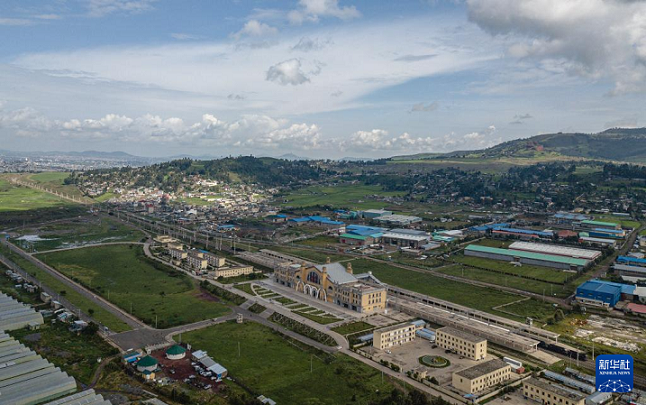
Lebu Railway Station [Photo/Xinhua]
Source: <http://www.xinhuanet.com/world/20240512/1d050c0fcbf4418a841db9770d14208f/c.html>
Edited and Translated by Lu Yufei